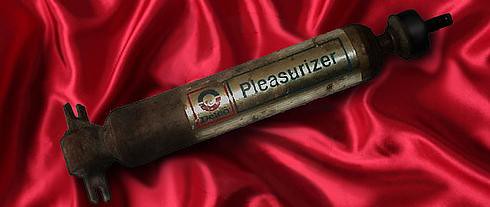copper vaporization
yeah, right. That's what the guy working at NAPA today attempted to pass (in more than one way) off on Margaret when she came in with her cratered brake pads... brake pads which I installed recently. We're not buyin' that.
She had been getting some grinding noise and feeling while braking, most notably from the right side. When I took the right side pads off a small chunk of brake dust fell out into a small pile. That doesn't normally happen with disc brakes unless they've been extremely overheated... to the point where the rotors almost glow. Rotors change color after that (blue pearly usually). Her's looked fine, and cleaned up well.
Anyway, on both sides the brake pads had little craters in them. That's not really normal. I'd expect some lines, but not craters. One of the ones on the right appeared to have a hairline crack.
I think it's because I must not have bedded the pads aggressively enough last time after installing them. They were still not completely seated several weeks later when I installed the timing belt... a sure sign that she was not overheating them with her driving, and that nothing wrong in the system was causing excessive heat.
On to vaporization. My first question should have been to ask why NAPA would manufacture a brake pad that would vaporize at normal brake temperatures. Well, I knew they wouldn't, so I ask at what temperature copper vaporizes.
I did a little research, and copper vaporizes around 4600*F. That's plenty hot.
Let's think about this. The brake rotors are designed to absorb heat from the pads, and especially to keep heat away from the brake fluid (it will boil between about 300-400*F, depending on moisture content). I've seen rotors get up to about 600*F after spirited driving. They glow around 1500*F. They would melt probably around 2500-3000*F.
As far as I know, the pads and rotors will have similar temperatures, with the rotors being able to dissipate that heat fairly quickly. I just don't think the copper vaporization theory holds water. Any engineer who can tell me differently gets a cookie.
3:54PM
I was reading up a bit, and some types of brake pads are bedded at the factory at high heat (about 900*F) which may burn out some of the resins, creating small craters. These may or may not be that type. I have not run into this before, having done several thousand brake jobs between 1990-2000, but that doesn't mean they're not out there.
It would not explain why they were not bedded in right away, and does not explain the crack. It could explain some noise, as the holes can create pockets for brake dust to accumulate and stay between rotor and pad. Pad spreader springs like on many Mazdas and Toyotas might be an advantage in this situation. Most Hondas have none.
